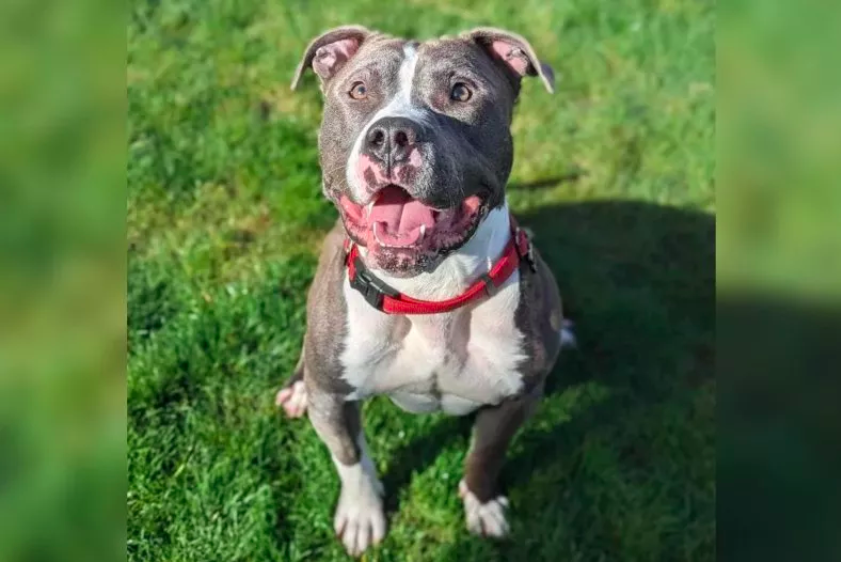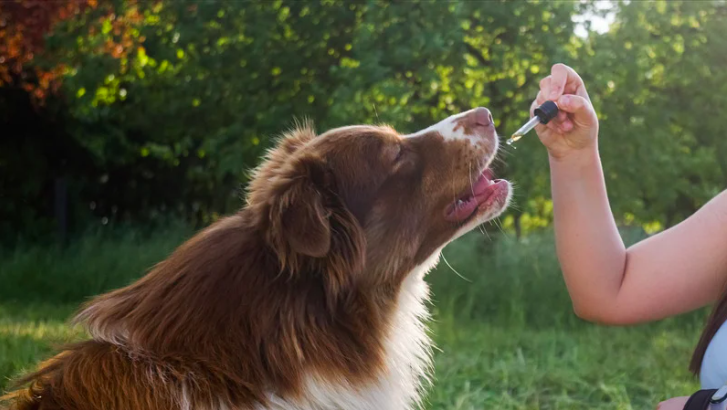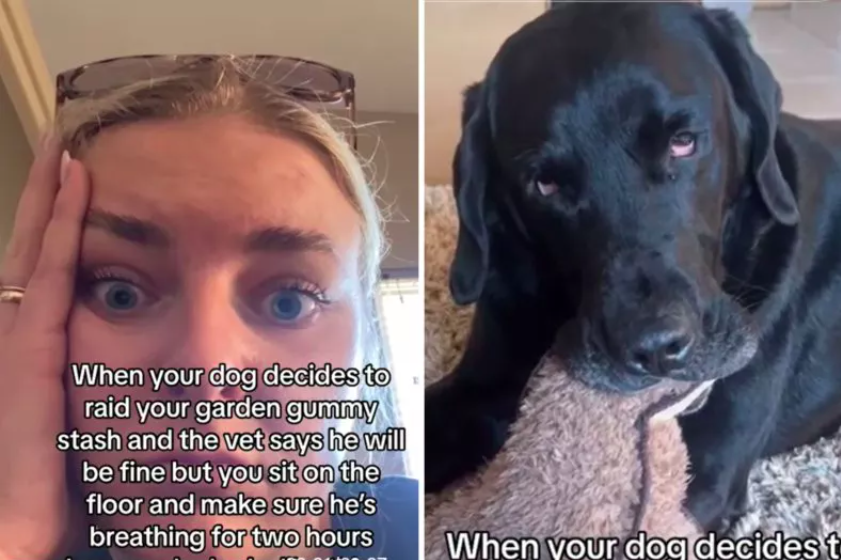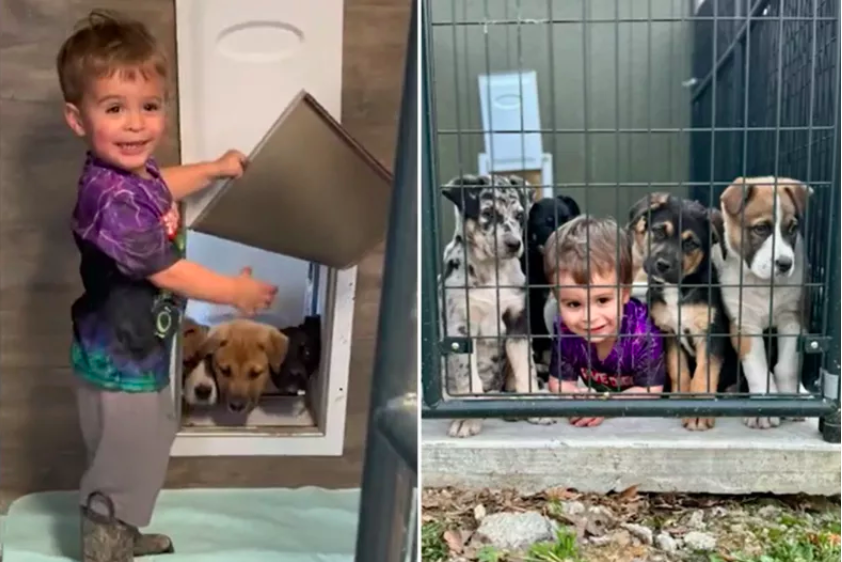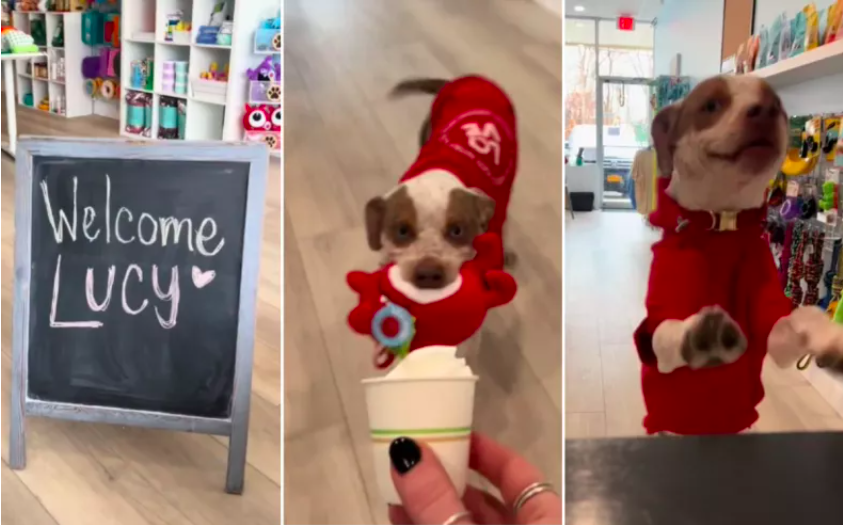Dogs
Tosa Inu Dog: The Ultimate Guide To This Remarkable Japanese Breed
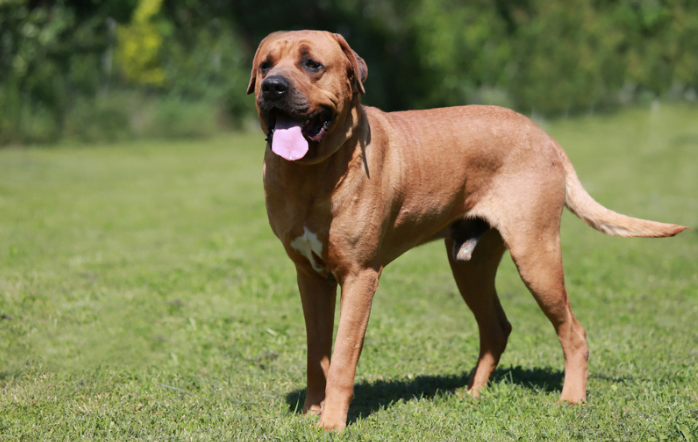
Tosa Inu Dog: The Ultimate Guide To This Remarkable Japanese Breed
The Tosa Inu dog, also known as the Japanese Mastiff, is a powerful and ancient breed that hails from Japan.
With its strong build, fearless nature, and unwavering loyalty, the Tosa Inu has become increasingly popular as both a companion and working dog.
In this comprehensive guide, we’ll delve deep into the world of this fascinating breed, exploring its history, temperament, and care requirements.
If you’re considering adding a Tosa Inu to your family, read on to learn everything you need to know about this captivating canine.
History of the Tosa Inu
Origins in Japan
The Tosa Inu dog can trace its roots back to the Tosa region (now known as Kochi Prefecture) on the island of Shikoku in Japan.
The breed was developed in the late 19th century by crossing native Japanese dogs with imported Western breeds, such as the English Mastiff, the Bulldog, and the Great Dane.
This mixture of East and West gave rise to the Tosa Inu’s distinct appearance and formidable strength.
Dog Fighting Legacy
Historically, the primary purpose of the Tosa Inu was dog fighting, a popular pastime in Japan during the Edo period. The breed’s powerful physique, agile movement, and exceptional courage made them well-suited for this brutal sport.
Tosa Inus were trained to fight in silence, which contributed to their reputation as stoic and disciplined dogs. While dog fighting is now illegal in most countries, the Tosa Inu’s legacy as a fighting dog endures in its determined and courageous nature.
Spread to the Western World
The Tosa Inu remained relatively unknown outside of Japan until the mid-20th century. As international travel and dog breeding became more common, the breed began to make its way to other countries, including the United States and Europe.
Today, the Tosa Inu is a rare but respected breed around the world, cherished for its strength, loyalty, and distinctive appearance.
Tosa Inu Characteristics and Appearance
Size and Build
The Tosa Inu is a large and muscular breed, with males typically weighing between 100 and 200 pounds and females between 80 and 150 pounds.
Their height ranges from 24 to 32 inches at the shoulder, with males generally being taller than females. The Tosa Inu’s powerful build is complemented by its loose, wrinkled skin and broad, square head.
Coat and Colors
The Tosa Inu’s short coat is dense and smooth to the touch. The breed comes in a variety of colors, including red, fawn, brindle, and occasionally black. Some Tosa Inus may have small white markings on their chest and feet.
Facial Features and Expression
Tosa Inus have a distinctive facial expression that often conveys a sense of calm intelligence. Their dark brown eyes are relatively small, while their ears are medium-sized and fold forward, hanging close to the cheeks.
The breed’s large, black nose sits prominently on its square muzzle, giving the Tosa Inu
Personality and Temperament of Tosa Inu Dogs
Tosa Inu dogs are known for their loyalty, courage, and calm temperament. They are highly intelligent dogs and can be trained to be great companions. These dogs are very attached to their family and may become overprotective if not properly socialized.
While Tosa Inu dogs are usually reserved with strangers, they are affectionate and loving with their families. They are also very patient with children and can be great family pets.
However, due to their large size and strength, early socialization and training are crucial to ensure they are well-behaved around children and other pets.
Tosa Inu dogs are also very adaptable and can thrive in different living situations. They do well in both urban and rural environments, as long as they receive adequate exercise and mental stimulation.
In summary, Tosa Inu dogs have a calm and loyal temperament, making them great companions for those who are willing to put in the effort to properly socialize and train them.
They are affectionate with their family and can be great with children, but their large size and strength make early socialization and training crucial for a well-behaved dog.
Training and Socialization for Tosa Inu Dogs
Training and socialization are crucial for all dogs, but it is especially important for Tosa Inu dogs due to their size and strength. Early socialization and training can help prevent potential behavioral issues and ensure a well-behaved dog.
When it comes to training, Tosa Inu dogs are highly intelligent and respond well to positive reinforcement. Reward-based training methods, such as treats or praise, are effective for teaching these dogs basic obedience commands and new tricks.
Consistency is also key when it comes to training a Tosa Inu dog, so it’s important to establish a routine and stick to it. Socialization is equally important for Tosa Inu dogs.
These dogs can be naturally reserved with strangers, so it’s important to expose them to new people, animals, and environments from a young age.
Socialization can help prevent fearfulness, aggression, and anxiety in these dogs. It’s important to introduce your Tosa Inu dog to different situations in a controlled and positive manner to ensure a positive experience.
Training and socialization should be ongoing throughout your Tosa Inu dog’s life. Continued training and exposure to new experiences can help keep these dogs mentally stimulated and well-behaved.
Additionally, it’s important to remember that Tosa Inu dogs respond best to positive reinforcement, so it’s important to avoid punishment-based training methods.
In summary, training and socialization are crucial for ensuring a well-behaved and happy Tosa Inu dog. Positive reinforcement training methods and early socialization can prevent potential behavioral issues and ensure a positive experience for your dog.
Training and socialization should be ongoing throughout your dog’s life to keep them mentally stimulated and well-behaved.
Health and Lifespan of Tosa Inu Dogs
Tosa Inu dogs are generally healthy and have a lifespan of around 10 to 12 years. However, like all dog breeds, they are prone to certain health issues that potential owners should be aware of.
One of the most common health issues in Tosa Inu dogs is hip dysplasia. This is a genetic condition that affects the hip joints and can cause pain and mobility issues. Other health issues that Tosa Inu dogs may be prone to include bloat, heart issues, and skin allergies.
To ensure your Tosa Inu dog is healthy, it’s important to schedule regular veterinary check-ups and stay up-to-date on vaccinations and preventive care. A healthy diet and regular exercise can also help prevent health issues in these dogs.
It’s also important to note that Tosa Inu dogs are sensitive to heat and should not be left outside in hot weather for extended periods. They are also prone to obesity, so it’s important to monitor their weight and provide them with regular exercise.
In summary, Tosa Inu dogs are generally healthy with a lifespan of around 10 to 12 years. However, they are prone to certain health issues, including hip dysplasia, bloat, heart issues, and skin allergies.
Regular veterinary check-ups, preventive care, a healthy diet, and regular exercise can help prevent health issues in these dogs. It’s also important to monitor their weight and sensitivity to heat.
Grooming and Care for Tosa Inu Dogs
Tosa Inu dogs have short, dense coat that is easy to maintain. They do not require frequent baths, and a bath every few months is usually sufficient.
However, regular brushing is recommended to remove loose hair and prevent matting. Brushing your Tosa Inu dog’s coat once or twice a week is usually sufficient.
In addition to regular grooming, Tosa Inu dogs require regular exercise to keep them healthy and happy. They are a large breed of dog and require at least one long walk or jog per day to keep them physically and mentally stimulated.
They also benefit from interactive toys and games that challenge them mentally. Tosa Inu dogs are also prone to obesity, so it’s important to monitor their weight and provide them with a healthy diet.
Feeding your Tosa Inu dog high-quality dog food that is appropriate for their age and activity level can help prevent obesity and other health issues.
Regular veterinary check-ups are also important for Tosa Inu dogs. They should be seen by a veterinarian at least once a year for routine check-ups and preventive care.
Vaccinations and parasite prevention, such as flea and tick prevention, are also important for these dogs. In summary, Tosa Inu dogs have short, dense coat that is easy to maintain with regular brushing.
They require regular exercise to keep them physically and mentally stimulated and are prone to obesity, so it’s important to monitor their weight and provide them with a healthy diet. Regular veterinary check-ups and preventive care are also important for these dogs.
Diet and Nutrition of Tosa Inu Dogs
Tosa Inu dogs require a healthy and balanced diet to maintain their health and well-being. Feeding them high-quality dog food that is appropriate for their age, activity level, and health condition is crucial.
Protein is an essential nutrient for Tosa Inu dogs, as it helps support their muscle development and overall health. Good sources of protein for dogs include chicken, turkey, beef, and fish.
Carbohydrates are also an important source of energy for dogs, and good sources include whole grains, vegetables, and fruits.
It’s important to note that Tosa Inu dogs are prone to obesity, so it’s important to monitor their food intake and provide them with appropriate portion sizes.
Free feeding, where food is available to the dog at all times, should be avoided. Instead, feeding your Tosa Inu dog at set meal times and controlling their portions can help prevent obesity.
Tosa Inu dogs are also prone to certain health issues, such as hip dysplasia and skin allergies. Feeding them high-quality dog food that is formulated for their specific health needs can help prevent or manage these health issues.
In addition to a healthy and balanced diet, it’s important to ensure that your Tosa Inu dog has access to fresh, clean water at all times. Dehydration can lead to serious health issues, so it’s important to monitor your dog’s water intake and refill their water bowl regularly.
In summary, Tosa Inu dogs require a healthy and balanced diet that is appropriate for their age, activity level, and health condition. Protein and carbohydrates are important nutrients for these dogs, and portion control is important to prevent obesity.
Feeding them high-quality dog food that is formulated for their specific health needs can help prevent or manage certain health issues. Access to fresh, clean water is also important for their overall health and well-being.
Exercise and Activity Requirements
Tosa Inu dogs are a large and active breed that requires regular exercise to maintain their physical and mental well-being. These dogs are known for their strength and endurance, and they require plenty of opportunities to exercise and play.
A daily walk or jog is essential for Tosa Inu dogs, as it helps keep them fit and healthy. They also benefit from regular playtime, interactive toys, and games that challenge them both mentally and physically.
Since Tosa Inu dogs are highly intelligent, they require activities that can help stimulate their minds and prevent boredom. In addition to regular exercise and play, Tosa Inu dogs also benefit from obedience training and socialization.
These dogs are naturally reserved with strangers and may become overprotective if not properly socialized. Training and socialization can help prevent potential behavioral issues and ensure a well-behaved dog.
It’s important to note that Tosa Inu dogs are sensitive to heat, so exercise should be limited in hot weather. They are also prone to obesity, so it’s important to monitor their weight and provide them with appropriate exercise and a healthy diet.
In summary, Tosa Inu dogs require regular exercise and play to maintain their physical and mental well-being. A daily walk or jog is essential, as well as regular playtime, interactive toys, and games.
Obedience training and socialization are also important for these dogs. Exercise should be limited in hot weather, and obesity should be prevented with appropriate exercise and a healthy diet.
Is the Tosa Inu the Right Breed for You?
If you’re considering adopting a Tosa Inu dog, it’s important to determine if this breed is the right fit for your lifestyle and household. Here are some factors to consider before adopting a Tosa Inu dog:
Activity Level
Tosa Inu dogs are a large and active breed that requires regular exercise and play to maintain their physical and mental well-being.
They require at least one daily walk or jog and regular playtime, interactive toys, and games that challenge them both mentally and physically. If you’re not able to provide this level of exercise and activity, a Tosa Inu dog may not be the right fit for you.
Size
Tosa Inu dogs are a large breed of dog that can weigh up to 200 pounds (90 kg) and stand up to 32 inches (82 cm) tall. They require a lot of space to move around and can be challenging to handle for those who are not used to handling large breed dogs.
If you have a small living space or are not comfortable handling large dogs, a Tosa Inu dog may not be the right fit for you.
Training and Socialization
Tosa Inu dogs require early training and socialization to ensure a well-behaved and happy dog. They can be naturally reserved with strangers and may become overprotective if not properly socialized.
Training and socialization require time and effort, and if you’re not able to commit to this, a Tosa Inu dog may not be the right fit for you.
Health and Grooming
Tosa Inu dogs are generally healthy, but they are prone to certain health issues, such as hip dysplasia and skin allergies. They also require regular grooming, including brushing their short, dense coat.
If you’re not able to commit to regular veterinary check-ups, preventive care, and grooming, a Tosa Inu dog may not be the right fit for you.
In summary, Tosa Inu dogs require a lot of exercise and activity, space to move around, early training and socialization, regular veterinary care, and grooming.
If you’re able to commit to these requirements and provide a loving and caring home, a Tosa Inu dog can make a wonderful companion.
Conclusion
In conclusion, Tosa Inu dogs are a loyal, intelligent, and calm breed that can make great family pets. They require a lot of exercise and activity, early training and socialization, and regular veterinary care and grooming.
Tosa Inu dogs are generally healthy, but they are prone to certain health issues, such as hip dysplasia and skin allergies.
If you’re considering adopting a Tosa Inu dog, it’s important to determine if this breed is the right fit for your lifestyle and household.
Factors to consider include your activity level, living space, ability to commit to training and socialization, and willingness to provide regular veterinary care and grooming.
Overall, with proper care and attention, a Tosa Inu dog can make a wonderful and loyal companion. If you’re willing to put in the effort and provide a loving home, a Tosa Inu dog may be the perfect addition to your family.
Questions People Also Ask: (FAQs)
What is the temperament of a Tosa Inu dog?
Tosa Inu dogs are known for their loyal, intelligent, and calm temperament. They can be reserved with strangers but are typically good with children and other pets if properly socialized.
Are Tosa Inu dogs easy to train?
Yes, Tosa Inu dogs are highly intelligent and respond well to positive reinforcement training methods. Consistency and patience are key when it comes to training these dogs.
How much exercise do Tosa Inu dogs require?
Tosa Inu dogs require at least one daily walk or jog and regular playtime, interactive toys, and games that challenge them both mentally and physically.
Are Tosa Inu dogs prone to health issues?
Yes, Tosa Inu dogs are prone to certain health issues, such as hip dysplasia and skin allergies. Regular veterinary care and preventive measures can help prevent or manage these health issues.
Do Tosa Inu dogs require a lot of grooming?
No, Tosa Inu dogs have short, dense coat that is easy to maintain. Regular brushing is recommended to remove loose hair and prevent matting, but they do not require frequent baths.
Are Tosa Inu dogs good family pets?
Yes, Tosa Inu dogs can make great family pets with proper training and socialization. They are loyal, intelligent, and calm, and can be good with children and other pets if properly socialized.
Are Tosa Inu dogs easy to handle due to their size?
Tosa Inu dogs are a large breed of dog that can weigh up to 200 pounds (90 kg) and stand up to 32 inches (82 cm) tall. They require a lot of space to move around and can be challenging to handle for those who are not used to handling large breed dogs.
We appreciate you for taking the time to read this article!
Finally, we hope you found this article interesting? And what do you think about ”Tosa Inu Dog: The Ultimate Guide To This Remarkable Japanese Breed!?”
Please feel free to share or inform your friends about this article and this site, thanks!
And let us know if you observe something that isn’t quite right.
Dogs
How to Remove Dog Urine Stains: The Ultimate Guide to Pet Stain Removal
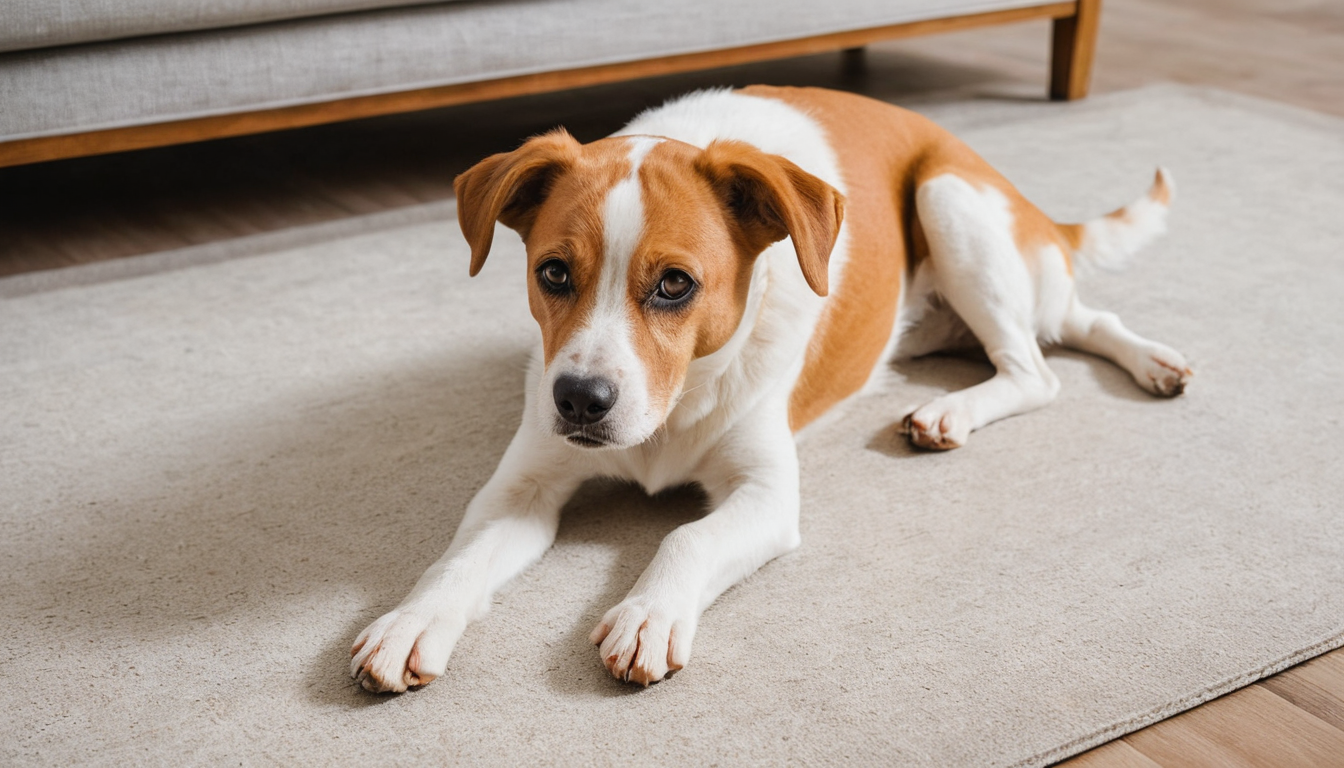
As any dog owner knows, accidents happen. Whether it’s a puppy still learning to potty train or an older dog with incontinence issues, dog urine stains can be a common problem in households with pets. Not only are dog pee stains unsightly, but they also carry strong odors that can linger long after the stain has dried. Fortunately, with the right knowledge and cleaning products, you can effectively remove dog urine stains and keep your home clean and fresh.
In this ultimate guide to dog pee stain removal, we’ll walk you through various methods for removing dog urine stains from different surfaces, along with tips for preventing future accidents. Whether you’re dealing with carpets, upholstery, or hardwood floors, we’ve got you covered.
1. Act Quickly: Why Timing Matters
The sooner you address a dog urine stain, the easier it will be to remove. Urine is acidic and can penetrate deep into fabrics or carpets, which can make the stain more difficult to remove if left for too long. For fresh pet stains, blot up as much liquid as possible with a clean towel or paper towels. Avoid rubbing the stain, as this can spread the urine and push it deeper into the fibers. If the stain is older, you may need to use a more powerful cleaning solution to break down the urine.
2. Use the Right Cleaning Solution
To effectively remove dog urine stains, you need the right cleaning solution. Regular household cleaners may not be enough to neutralize the odor or break down the stain, especially with stubborn dog pee stains. You’ll want a solution that not only cleans but also deodorizes.
DIY Solutions for Removing Dog Urine Stains:
- Vinegar and Baking Soda: One of the most popular DIY remedies involves a mixture of white vinegar and water. Mix one part white vinegar with one part water and pour the solution over the stained area. Let it sit for 5-10 minutes before blotting it up. Once dry, sprinkle baking soda over the area to help neutralize any lingering odors. The combination of vinegar and baking soda works well to lift the stain and tackle odors.
- Dish Soap and Hydrogen Peroxide: For tougher stains, you can create a powerful solution by mixing one tablespoon of dish soap with two cups of warm water and one tablespoon of hydrogen peroxide. Apply the solution to the stain and let it sit for about 10-15 minutes. Then, blot it up with a clean cloth. This mixture is especially effective for older stains.
Commercial Cleaners:
If you prefer a store-bought solution, there are many enzymatic cleaners specifically designed to remove dog urine stains. Enzymatic cleaners contain natural enzymes that break down the proteins in the urine, which is key to fully removing both the stain and the odor. Look for a cleaner that is safe for pets and suitable for your type of flooring or upholstery.
To use, spray the enzymatic cleaner generously over the stain, making sure to cover the entire affected area. Allow it to sit for the amount of time specified on the product label—usually about 10-15 minutes—and then blot up any excess liquid. Follow the instructions carefully to get the best results.
3. Target Different Surfaces
Dog urine stains can occur on various surfaces in your home, and each requires a slightly different treatment.
Carpets and Rugs:
Carpets are the most common victims of dog urine stains. Because carpet fibers are highly absorbent, it’s important to act quickly to avoid the urine soaking in deep. After blotting up as much liquid as possible, apply your cleaning solution and let it sit for the recommended time. Once the stain is removed, rinse the area with clean water and blot it dry. You may want to vacuum the area once it’s fully dry to restore the texture of the carpet.
For tough or older stains, consider using a steam cleaner with an appropriate cleaning solution designed for pet stains. Steam cleaning can penetrate deeper into the carpet fibers and help remove lingering odors.
Upholstery:
If your dog has had an accident on the couch or a chair, you can use the same vinegar-water solution or an enzymatic cleaner to treat the stain. Be sure to test any cleaning solution on an inconspicuous area of the fabric first to ensure it doesn’t cause discoloration or damage. When cleaning upholstery, use a minimal amount of liquid to avoid soaking the fabric. Gently blot the stain with a cloth, and allow the upholstery to air dry.
Hardwood Floors:
While dog urine can damage hardwood floors if left untreated, it’s easier to clean than carpets. First, wipe up as much liquid as possible using a dry cloth. Then, apply a mild vinegar-water solution (1 part vinegar to 3 parts water) to the stain. Wipe it up quickly and dry the area to prevent moisture from seeping into the wood. For more stubborn stains, consider using a specialized floor cleaner designed for pet stains.
Tile and Stone Floors:
Tile floors are relatively easy to clean, but urine can seep into the grout and leave a lingering odor. Use a mild soap-and-water solution to scrub the area, and for grout, you may need a grout cleaner or a mixture of baking soda and water to lift the stain. Be sure to dry the area thoroughly to prevent water damage.
4. Neutralize Odors
Even after you’ve successfully removed the stain, the odor may still linger. To completely neutralize odors, try sprinkling baking soda over the cleaned area and let it sit for several hours (or overnight). Baking soda is excellent at absorbing odors and can leave your home smelling fresh.
Alternatively, if you’re using an enzymatic cleaner, it should also help neutralize the odor as it breaks down the urine proteins.
5. Prevent Future Accidents
While cleaning up after dog urine stains is essential, prevention is always better. Here are a few tips to minimize future accidents:
- Regular Bathroom Breaks: If your dog is still in the potty training phase, be sure to take them out frequently. For adult dogs, regular walks and bathroom breaks are essential to prevent accidents indoors.
- Health Check: Sometimes, increased urination or accidents indoors can be a sign of a health issue. If your dog suddenly starts urinating indoors or seems to have trouble holding it, consult your vet.
- Protective Mats: Consider placing washable mats or furniture covers in areas where your dog spends the most time. These can help protect your floors and furniture from future accidents.
Conclusion
Removing dog urine stains and pet stains doesn’t have to be a difficult or stressful task. With the right cleaning solutions and techniques, you can successfully remove dog urine stains from carpets, upholstery, and hard surfaces. The key is to act quickly, use the right products, and follow the proper cleaning methods for each type of surface.
By keeping your home clean and odor-free, you’ll ensure a comfortable environment for both you and your furry companion.
Dogs
The Touching Story Behind Why a Dog Lays on a Particular Spot in the Yard

The Touching Story Behind Why a Dog Lays on a Particular Spot in the Yard: A Tale of Unbreakable Loyalty
Dogs are known for their incredible loyalty, but sometimes their devotion to those they love can manifest in heart-wrenching ways. This is the case with one dog whose habit of laying on a specific spot in the yard has left many people in tears. What may appear to be a simple, everyday action carries with it a deeper, heartbreaking reason that has moved dog lovers and pet owners alike.
In this article, we will delve into the emotional backstory of why this dog chooses that special spot and what it reveals about the profound bond between pets and their owners.
The Unbreakable Bond Between Humans and Dogs
Dogs have long been known as “man’s best friend.” Their unwavering loyalty and companionship can turn them into integral parts of our families. They sense our emotions, offer comfort in times of need, and provide joy and laughter. The bond between humans and dogs is unique, and for many, their pet becomes more than just an animal — they are family.
Why Do Dogs Form Such Strong Attachments?
One of the reasons dogs are so loyal is due to their pack mentality. In the wild, dogs live and hunt in packs, forming tight-knit social groups. When domesticated, they transfer this pack behavior to their human families. Dogs will go to great lengths to remain close to those they consider part of their pack, and when a member is lost, the dog often mourns deeply.
@talltaz The whole yard and he only lays on top of where we buried her 🥺😭 #petloss #grief #fyp
The Story of the Loyal Dog and the Special Spot in the Yard
In one particular case, a dog’s loyalty is demonstrated in an incredibly poignant way. After the passing of the dog’s owner, the pet began to exhibit unusual behavior — lying down on the same spot in the yard every single day. At first, the family thought it was just a comfortable place for the dog to rest, but they soon realized that the spot held a special significance.
The Meaning Behind the Spot
The spot where the dog lays is the same place where the owner used to spend time with the dog, sitting outside together, enjoying the fresh air and the sunshine. After the owner passed away, the dog returned to that spot daily, as if waiting for the person to return. The dog’s actions have been described as a form of mourning, a way of staying close to their beloved human even after they’ve gone.
How Pets Grieve the Loss of Their Owners
Just like humans, dogs can experience grief when they lose someone they love. The signs of grief in dogs can include changes in behavior, loss of appetite, and separation anxiety. In some cases, dogs may return to places that remind them of their owner, like the loyal dog who lays on that specific spot in the yard.
Signs of Grieving in Dogs
- Loss of Appetite: One of the most common signs of a grieving dog is a refusal to eat or a noticeable decrease in appetite.
- Withdrawal: A grieving dog may become less active or less interested in playing, choosing instead to lay in one place for long periods.
- Whining or Howling: Some dogs will vocalize their sadness through whines or howls, particularly when they are in a place that reminds them of their owner.
- Searching: It’s not uncommon for dogs to search the house or yard for their lost companion, wandering around or sniffing in places where their owner used to be.
The Science Behind Dogs and Grief
Research into canine behavior has shown that dogs are capable of feeling complex emotions, including grief. A study by the American Society for the Prevention of Cruelty to Animals (ASPCA) revealed that more than 60% of dogs exhibited signs of grief after the loss of a companion pet, and it’s reasonable to believe that they would react similarly after losing a human companion. The dog’s brain processes emotions in much the same way as the human brain, and they often form deep emotional bonds that are difficult to break.
How Dogs Cope With Loss
Dogs, much like humans, cope with loss in different ways. While some may exhibit signs of sadness or distress, others might become more clingy or protective of their remaining family members. Providing them with comfort, attention, and familiar routines can help them cope with their feelings of loss.
Helping a Grieving Dog
If your dog is showing signs of grief, it’s essential to provide them with support and understanding. They may need extra care and attention during this difficult time. Here are a few ways to help a grieving dog:
- Stick to a Routine: Keeping a regular routine can provide a sense of stability and security for your pet.
- Give Them Extra Attention: Spending more time with your dog, offering affection and comfort, can help ease their sadness.
- Offer Comforting Items: Items that smell like the deceased owner, such as clothing or bedding, may help the dog feel close to their lost companion.
A Dog’s Loyalty Knows No Bounds
The story of the dog lying on that specific spot in the yard is just one of many examples of how deeply dogs feel their connections to humans. It highlights the incredible loyalty that dogs have for their owners, even after death. Dogs don’t just offer companionship while we are alive; they continue to show their love and dedication long after we’re gone.
Other Heartwarming Stories of Canine Loyalty
This isn’t the only story of a dog displaying remarkable loyalty. There are countless stories of dogs who wait for their owners, return to places they once shared, or exhibit behaviors that suggest they are mourning the loss of their loved ones. One of the most famous examples is the story of Hachiko, the Japanese Akita who waited at a train station every day for nearly ten years after his owner’s death. Such stories remind us of the deep emotional lives of our pets and the bonds they form with us.
Conclusion
The heartbreaking story of the dog laying on a specific spot in the yard is a testament to the unbreakable bond between humans and their pets. It’s a reminder that dogs are not just pets; they are loyal, loving companions who feel loss and grief just as deeply as we do. For this particular dog, that spot in the yard is more than just a place to rest; it’s a symbol of the inseparable bond they shared with their owner.
Frequently Asked Questions (FAQs)
Why does my dog lay in a specific spot every day?
Dogs often return to places that have sentimental value, either due to memories they associate with the spot or because it reminds them of their owners. In some cases, a dog may lay in a particular spot because it feels safe or comforting.
Can dogs really feel grief after losing an owner?
Yes, dogs are capable of feeling grief. They can show signs of sadness, withdrawal, loss of appetite, and even changes in behavior when they lose a companion, whether it’s another pet or a human.
How can I help my grieving dog cope with the loss of a family member?
You can help your grieving dog by providing extra attention, maintaining a consistent routine, and offering comforting items like their owner’s clothing or bedding. It’s important to give them time to adjust and to provide emotional support.
How long does it take for a dog to overcome grief?
The grieving process can vary from dog to dog. While some dogs may recover within a few weeks, others may take months to adjust. It’s essential to be patient and offer them the love and care they need during this time.
Are there any other signs that a dog is grieving?
Aside from loss of appetite and withdrawal, a grieving dog may become more vocal, clingy, or exhibit behaviors like searching the house for their lost companion. Each dog grieves differently, so it’s crucial to observe their behavior and provide comfort when needed.
We appreciate you for taking the time to read this article!
Finally, we hope you found this article interesting? And what do you think about ”The Touching Story Behind Why a Dog Lays on a Particular Spot in the Yard!?”
Please feel free to share or inform your friends about this article and this site, thanks!
And let us know if you observe something that isn’t quite right.
References: Heartbreaking Reason Dog Lays on Specific Spot in Yard
Dogs
How Do Dogs Know Their Rescuers and Adopters?

How Do Dogs Know Their Rescuers and Adopters?
Dogs are often considered man’s best friend, and for good reason. Their loyalty, empathy, and innate ability to form deep connections with humans are truly remarkable. But one question that has intrigued pet lovers and researchers alike is: How do dogs recognize their rescuers and adopters?
This seemingly simple question opens up a world of complex emotional and cognitive processes that dogs undergo when they meet someone who will become an important part of their lives.
In this comprehensive exploration, we will delve into the science and emotion behind a dog’s ability to recognize and bond with their rescuers and adopters. From the impact of scent and body language to the neurological responses in a dog’s brain, we will uncover the many layers that contribute to this profound connection.
The Bond Between Humans and Dogs
A Relationship Rooted in History
The relationship between humans and dogs dates back thousands of years. Originally, dogs were domesticated from wolves, and through selective breeding, they evolved into the varied breeds we know today. This long history has led to a deep bond between the two species, with dogs becoming attuned to human emotions, behaviors, and cues.
Understanding the Human-Dog Connection
Dogs have evolved to become incredibly perceptive to human emotions. This connection is so strong that dogs can often sense when their owners are happy, sad, or anxious. This ability is due in part to the oxytocin hormone, often referred to as the “love hormone.” Both dogs and humans release oxytocin when they interact positively, strengthening their bond.
How Dogs Recognize Their Rescuers
The Role of Scent in Recognition
Dogs have an extraordinary sense of smell—up to 100,000 times more sensitive than that of humans. This acute olfactory ability allows them to pick up on a wide range of scents, including those associated with specific people. When a dog is rescued, the first thing they often do is sniff their rescuer. This initial interaction helps the dog form a scent-based memory of the person who saved them.
The Importance of Body Language
In addition to scent, dogs rely heavily on body language to interpret human intentions. A rescuer’s calm demeanor, gentle movements, and soft voice can reassure a frightened dog and help them form a positive association. Dogs are incredibly intuitive and can quickly pick up on the non-verbal cues that indicate whether a person is a friend or foe.
Voice Recognition and Emotional Tone
Dogs are also highly attuned to the tone of voice used by their rescuers. A soothing, calm voice can help alleviate a dog’s anxiety and build trust. Over time, dogs can learn to recognize their rescuer’s voice and associate it with safety and comfort.
Adoption: The Beginning of a New Bond
The First Meeting
The initial meeting between a dog and their adopter is a critical moment. During this time, the dog will use all of their senses—smell, sight, hearing, and touch—to assess the person. A successful first meeting often involves allowing the dog to approach the adopter on their own terms, giving them the space to feel safe and secure.
Building Trust Over Time
Trust is not built overnight. It takes time, patience, and consistency for a dog to fully trust their adopter. This process can be particularly challenging for dogs that have experienced trauma or neglect. However, with love and understanding, even the most fearful dogs can learn to trust again.
The Role of Routine in Bonding
Dogs thrive on routine. Establishing a consistent routine with regular feeding times, walks, and play sessions helps a dog feel secure in their new environment. This sense of security is crucial for building a strong bond between a dog and their adopter.
The Science Behind the Bond
Neurological Responses in Dogs
When a dog interacts with their rescuer or adopter, their brain undergoes several changes. Research has shown that positive interactions with humans can increase levels of oxytocin in a dog’s brain. This hormone is responsible for feelings of love and attachment, similar to the bond between a parent and child.
The Role of the Amygdala
The amygdala, a part of the brain involved in processing emotions, plays a crucial role in how dogs perceive their rescuers and adopters. This area of the brain helps dogs recognize familiar faces and respond to emotional cues, further strengthening the bond between dog and human.
Dopamine and Positive Reinforcement
Dopamine, another important neurotransmitter, is released in a dog’s brain during positive interactions with their owner. This “feel-good” chemical reinforces the bond by making the dog associate their owner with feelings of happiness and pleasure.
Emotional Intelligence in Dogs
Dogs’ Ability to Empathize
One of the most remarkable aspects of dogs is their ability to empathize with humans. Studies have shown that dogs can sense when their owner is upset and will often try to comfort them. This emotional intelligence is a key factor in the deep bond that forms between a dog and their rescuer or adopter.
Recognizing Human Emotions
Dogs can recognize and respond to human emotions through facial expressions, tone of voice, and body language. This ability to understand and react to human emotions is a result of thousands of years of co-evolution, making dogs incredibly in tune with their owners.
Challenges in Forming Bonds with Rescued Dogs
Overcoming Trauma
Many rescued dogs come from backgrounds of abuse, neglect, or abandonment. These traumatic experiences can make it difficult for them to trust humans. Patience, understanding, and professional training are often required to help these dogs overcome their past and form new bonds with their adopters.
The Role of Positive Reinforcement
Positive reinforcement is a powerful tool in helping rescued dogs build trust with their adopters. Rewarding good behavior with treats, praise, and affection can help a dog associate their adopter with positive experiences, making it easier for them to bond.
The Importance of Socialization
Socialization is key to helping rescued dogs feel comfortable in their new environment. Introducing them to new people, places, and other animals in a controlled and positive manner can help reduce anxiety and build confidence.
The Power of Love and Patience
Stories of Successful Bonds
Countless stories exist of dogs who, despite their difficult pasts, have gone on to form deep and lasting bonds with their adopters. These stories are a testament to the power of love, patience, and understanding in helping dogs heal and trust again.
The Impact of a Forever Home
For many rescued dogs, finding a forever home is a life-changing experience. The security, love, and care they receive from their adopters can help them overcome their past and live a happy, fulfilling life.
How Do Dogs Know They’ve Found Their Forever Family?
The Subtle Signs of Recognition
Dogs have a unique way of showing that they recognize and trust their adopters. Some of these signs include following their owner around the house, seeking out physical affection, and displaying relaxed body language. These subtle behaviors are a clear indication that a dog has formed a strong bond with their adopter.
The Role of Consistency and Care
Consistency in care is crucial in helping a dog feel secure in their new home. Regular feeding times, walks, and play sessions help establish a routine that dogs can rely on, making them feel safe and loved.
Understanding Your Dog’s Language
Dogs communicate their feelings in various ways, including through their body language, vocalizations, and behavior. Understanding these signals is key to building a strong, trusting relationship with your dog.
Conclusion: The Deep Connection Between Dogs and Their Rescuers
The bond between a dog and their rescuer or adopter is one of the most profound relationships in the animal kingdom. It is built on trust, love, and understanding, and is reinforced by the many ways dogs communicate and connect with their human companions.
Whether through scent, body language, or the release of oxytocin and dopamine, dogs have a unique ability to recognize and bond with the people who save them. This connection is not only a testament to the emotional intelligence of dogs but also to the deep-rooted history and co-evolution of the human-dog relationship.
Frequentions Asked Questions (FAQs)
Can dogs remember their rescuers even after many years?
Yes, dogs have excellent long-term memories, especially when it comes to people who have made a significant impact on their lives, such as rescuers. A dog’s strong sense of smell and emotional memory allow them to remember their rescuers even after a long time.
How can adopters help a dog adjust to their new home?
Adopters can help their dog adjust by establishing a consistent routine, providing plenty of positive reinforcement, and allowing the dog to explore their new environment at their own pace. Patience and understanding are key to helping a dog feel secure in their new home.
Do dogs feel gratitude towards their rescuers?
While dogs may not feel gratitude in the same way humans do, they do form strong emotional bonds with their rescuers. These bonds are often based on trust, safety, and the positive experiences shared with their rescuer.
How do dogs recognize their rescuers or adopters?
Dogs have an incredible sense of smell and memory, which helps them recognize their rescuers or adopters. They can remember the unique scent of a person, even if they haven’t seen them for a long time. Additionally, dogs are highly perceptive to body language and voice tone, which allows them to form a bond and recognize their humans through these cues.
How long does it take for a dog to bond with a new adopter?
The time it takes for a dog to bond with a new adopter can vary depending on the dog’s personality, past experiences, and the environment. Some dogs may form a bond within days, while others may take weeks or even months to fully trust and connect with their new owner. Patience, consistency, and positive reinforcement are key to building a strong bond.
Can a dog remember its rescuer after being adopted by someone else?
Yes, dogs can remember their rescuers even after being adopted by someone else. Their powerful memory, especially when it comes to emotional experiences, allows them to retain the scent, voice, and actions of those who have helped them. If a dog meets its rescuer again, it may show signs of recognition and affection.
What role does scent play in a dog recognizing its rescuer or adopter?
Scent plays a crucial role in how dogs recognize people. A dog’s sense of smell is thousands of times more sensitive than that of humans, allowing them to pick up on subtle scent cues that we can’t detect. When a dog is rescued or adopted, it memorizes the unique scent of its new human, which helps it identify and remember them later.
How can adopters help a rescue dog feel secure and loved?
To help a rescue dog feel secure and loved, adopters should provide a stable environment, consistent routines, and plenty of positive reinforcement. Spending quality time with the dog, offering treats, and giving gentle attention can help the dog feel safe. It’s also important to be patient and understanding, as rescue dogs may need time to adjust to their new surroundings and form a bond with their adopter.
We appreciate you for taking the time to read this article!
Finally, we hope you found this article interesting? And what do you think about ”How Do Dogs Know Their Rescuers and Adopters?!?”
Please feel free to share or inform your friends about this article and this site, thanks!
And let us know if you observe something that isn’t quite right.
-

 Pet Care2 years ago
Pet Care2 years agoThe Best Dog Collars For 2022
-

 Dogs2 years ago
Dogs2 years agoBichon Frise: The Happy, Playful, and Cuddly Companion
-

 Trending Pet Stories1 year ago
Trending Pet Stories1 year ago2023 ‘World’s Ugliest Dog’ Winner: Scooter’s Tale of Resilience
-

 Animals3 years ago
Animals3 years agoAre There Animals Having Down Syndrome?
-

 Pets2 years ago
Pets2 years agoThe Fascinating World Of The Red Chameleon
-

 Dogs3 years ago
Dogs3 years agoTop 10 Most Popular Dog Breeds According To AKC.
-
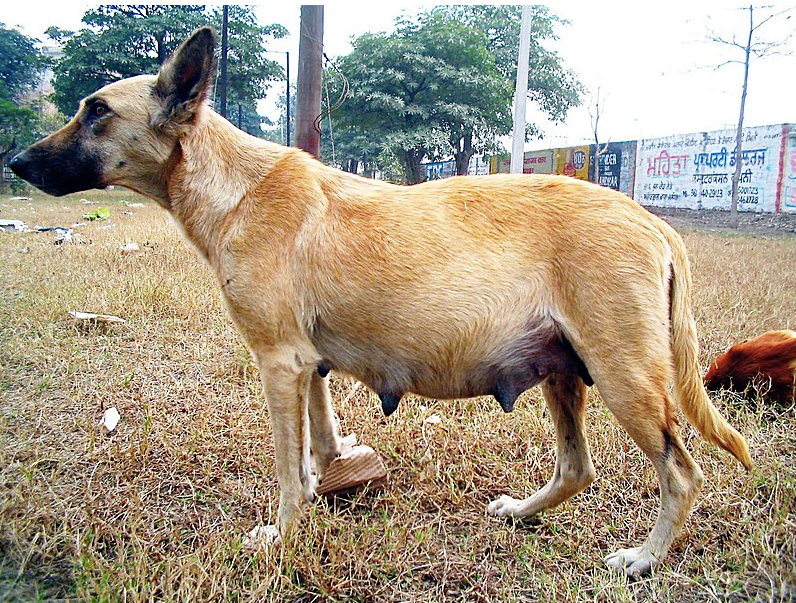
 Dogs2 years ago
Dogs2 years agoDogs 5 Weeks Pregnant: A Comprehensive Guide To Canine Pregnancy
-

 Dogs3 years ago
Dogs3 years ago21 Dog Breeds That Resemble Bears Or Teddy Bears!


